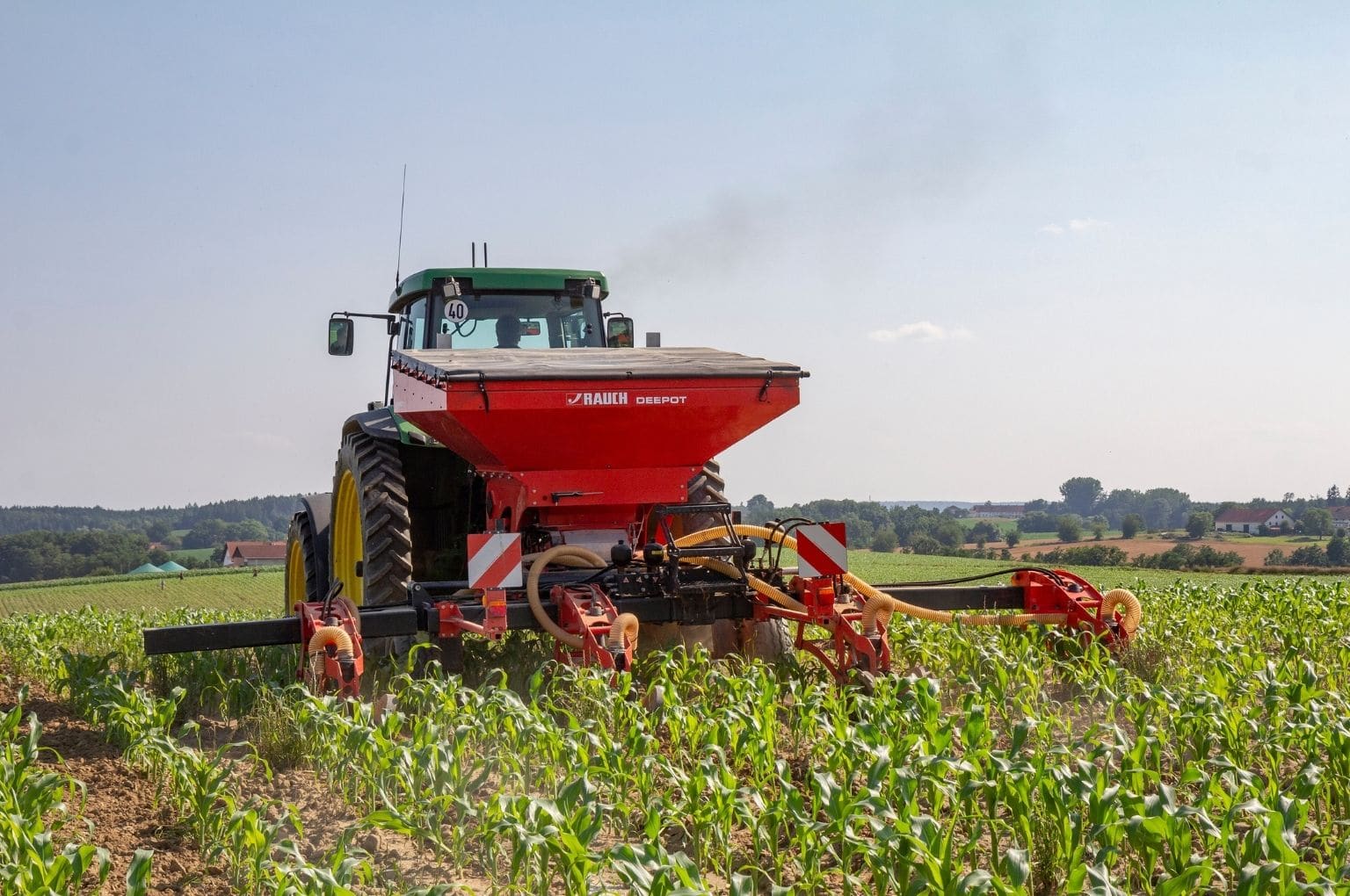The Rauch DeePot 25.1 for deep depot fertilisation, opens up new solutions in environmentally relevant fertilisation for corn and vegetable farms. It is the world’s first deep depot fertiliser applicator with single row metering for precise fertiliser placement in the soil, reducing ammonia, nitrous oxide emissions and nitrate leaching.
The up to 25 cm deep, tubular and airtight fertiliser placement in every 2nd row promises more sustainable plant nutrition. Due to the deep placement of the fertiliser depot, corn roots grow significantly deeper and form more root mass.
With DeePot 25.1 deep depot fertilisation, climate-relevant outgassing (ammonia and nitrous oxide) is reduced by 90% compared to a surface application.
The required amount of nitrogen is reduced by 20% with an additional yield of 3-5% on a 6-year average. Due to the deep placement of the fertiliser, the fertiliser granules cannot be washed out by heavy rain and flooding. During longer dry periods, corn stands fertilised with deep depot fertilisation remain vital even 3 weeks longer than conventionally fertilised stands due to the deeper root growth. The tubular fertiliser depots reduce the contact area of the fertiliser with the soil to a minimum. Unwanted nutrient leaching of nitrate is thus prevented.
The extra slim design of the injection coulters opens the soil surgically precisely and gently. In a first step, the coulter cuts plant residues and at the same time forms an initial fertiliser groove for the following coulter, which also has a reducing effect on the susceptibility to blockage and the pulling force required by the coulter. The following sword consists of the replaceable tips and a fertiliser channel with scraper springs behind it. Characteristic of the sword itself, is the 30 mm wide replaceable torpedo, which forms a soil channel for the following fertiliser. The fertiliser coulter behind it fills the space previously created by the torpedo with fertiliser. The pressure rollers and the scraper springs located behind the fertiliser channel serve for an integral and airtight slit closure. The springs located in the soil are vibrated by the soil and thus loosen the laterally compressed soil in the fertiliser slot. In combination with the soil guide plates, which are arranged on the side of the coulter, the soil is held and reconsolidated in the area of the cultivation horizon.
The contact of the fertiliser with the atmosphere is completely prevented. Despite the deep placement, DeePot deep depot fertilisation preserves the natural soil structure. Soil tillage does not take place.
Rauch deep depot fertilisation is currently regarded as one of the most efficient plant nutrition methods, which already implements future requirements such as increasing fertiliser efficiency, climate and water protection, as well as yield security during drought. Deep fertilisation describes a type of spatially defined deposition of fertiliser on different soil horizons below the grain seed. This offers the possibility of attracting the root into the depth in order to form about 25% more root mass. Especially when dry periods occur during the growing season, water is better retained in deeper soil areas, thus ensuring longer plant vigor.
Furthermore, deep fertilisation is intended to counteract nutrient losses due to leaching and evaporation and thus the disadvantages of conventional, superficial fertilization.

![RightSpot Ad Template Digital-1400×190-px[76] Ag Leader RightSpot](https://world-agritech.com/wp-content/uploads/elementor/thumbs/RightSpot-Ad-Template-Digital-1400x190-px76-r316mmc0hgoob9qxmklllnnbxta1nlj7t2vjkoyeek.png)







